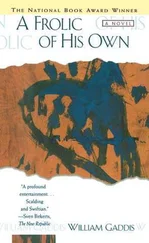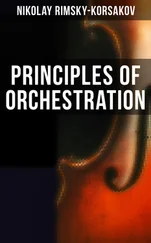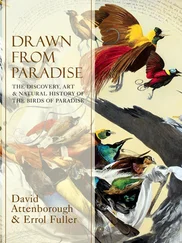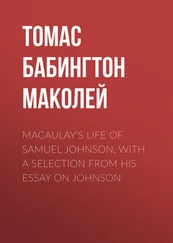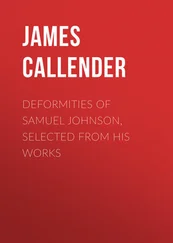The following remarks illustrate the characteristics, timbre, and employment of special instruments:
The duty of the piccolo and small clarinet is, principally, to extend the range of the ordinary flute and clarinet in the high register. The whistling, piercing quality of the piccolo in its highest compass is extraordinarily powerful, but does not lend itself to more moderate shades of expression. The small clarinet in its highest register is more penetrating than the ordinary clarinet. The low and middle range of the piccolo and small clarinet correspond to the same register in the normal flute and clarinet, but the tone is so much weaker that it is of little service in those regions. The double bassoon extends the range of the ordinary bassoon in the low register. The characteristics of the bassoon's low compass are still further accentuated in the corresponding range of the double bassoon, but the middle and upper registers of the latter are by no means so useful. The very deep notes of the double bassoon are remarkably thick and dense in quality, very powerful in piano passages.
Note. Nowadays, when the limits of the orchestral scale are considerably extended (up to the high C of the 7th octave, and down to the low C , 16 ft. contra octave), the piccolo forms an indispensable constituent of the wind-group; similarly, it is recognised that the double bassoon is capable of supplying valuable assistance. The small clarinet is rarely employed and only for colour effects.
The English horn, or alto oboe (oboe in F ) is similar in tone to the ordinary oboe, the listless, dreamy quality of its timbre being sweet in the extreme. In the low register it is fairly penetrating. The bass clarinet, though strongly resembling the ordinary clarinet, is of darker colour in the low register and lacks the silvery quality in the upper notes; it is incapable of joyful expression. The bass flute is an instrument seldom used even today; it possesses the same features as the flute, but it is colder in colour, and crystalline in the middle and high regions. These three particular instruments, apart from extending the low registers of the instruments to which they belong, have their own distinctive peculiarities of timbre, and are often used in the orchestra, as solo instruments, clearly exposed.
Note. Of the six special instruments referred to above, the piccolo and double bassoon were the first to be used in the orchestra; the latter, however, was neglected after Beethoven's death and did not reappear until towards the end of the 19th century. The Eng. horn and bass clarinet were employed initially during the first half of the same century by Berlioz, Meyerbeer, and others, and for some time retained their position as extras , to become, later on, permanent orchestral factors, first in the theatre, then in the concert room. Very few attempts have been made to introduce the small clarinet into the orchestra (Berlioz etc.); this instrument together with the bass flute is used in my opera-ballet Mlada (1892), and also in my most recent compositions, The Christmas Night , and Sadko ; the bass flute will also be found in The Legend of the Invisible City of Kitesh , and in the revised version of " Ivan the Terrible ".
Of late years the habit of muting the wood-wind has come into fashion. This is done by inserting a soft pad, or a piece of rolled-up cloth into the bell of the instrument. Mutes deaden the tone of oboes, Eng. horns, and bassoons to such an extent that it is possible for these instruments to attain the extreme limit of pianissimo playing. The muting of clarinets is unnecessary, as they can play quite softly enough without artificial means. It has not yet been discovered how to mute the flutes; such a discovery would render great service to the piccolo. The lowest notes on the bassoon,
 and on the oboe and Eng. horn
and on the oboe and Eng. horn 
are impossible when the instruments are muted. Mutes have no effect in the highest register of wind instruments.
The formation of the group of brass instruments, like that of the wood-wind is not absolutely uniform, and varies in different scores. The brass group may be divided into three general classes corresponding to those of the wood-wind (in pair's, in three's, and in four's).
| Group corresponding to the wood-wind in pair's |
Group corresponding to the wood-wind in three's |
Group corresponding to the wood-wind in four's |
|
|
(II—Small trumpet). |
| 2 Trumpets I, II. |
3 Trumpets I, II, III. |
3 Trumpets I, II, III. |
|
(III—Alto trumpet |
(III—Alto trumpet or |
|
or: |
Bass trumpet.) |
|
{ 2 Cornets I, II. |
|
|
{ 2 Trumpets I, II.) |
|
| 4 Horns I, II, III, IV. |
4 Horns I, II, III, IV. |
6 or 8 Horns I, II, III, IV, V, VI, VII, VIII. |
| 3 Trombones. |
3 Trombones I, II, III. |
3 Trombones I, II, III. |
| 1 Tuba. |
1 Tuba [8]. |
1 Tuba. |
The directions are the same as in the preceding table for wood-wind. It is evident that in all three classes the formation may vary as the composer wishes. In music for the theatre or concert room page after page may be written without the use of trumpets, trombones and tuba, or some instrument may be introduced, temporarily as an extra . In the above table I have given the most typical formations, and those which are the most common at the present day.
Note I. Besides the instruments given above, Richard Wagner used some others in The Ring , notably the quartet of tenor and bass tubas, and a contrabass trombone. Sometimes these additions weigh too heavily on the other groups, and at other times they render the rest of the brass ineffective. For this reason composers have doubtless refrained from employing such instruments, and Wagner himself did not include them in the score of Parsifal . Some present-day composers (Richard Strauss, Scriabine) write for as many as five trumpets.
Note II. From the middle of the 19th century onward the natural brass disappeared from the orchestra, giving place to valve instruments. In my second opera, The May Night I used natural horns and trumpets, changing the keys, and writing the best notes "stopped"; this was purposely done for practise.
Though far less flexible than the wood-wind, brass instruments heighten the effect of other orchestral groups by their powerful resonance. Trumpets, trombones, and tubas are about equal in strength; cornets have not quite the same force; horns, in forte passages, are about one half as strong, but piano , they have the same weight as other brass instruments played softly. To obtain an equal balance, therefore, the marks of expression in the horns should be one degree stronger than in the rest of the brass; if the trumpets and trombones play pp , the horns should be marked p . On the other hand, to obtain a proper balance in forte passages, two horns are needed to one trumpet or one trombone.
Brass instruments are so similar in range and timbre that the discussion of register is unnecessary. As a general rule quality becomes more brilliant as the higher register is approached, and vice versa , with a decrease in tone. Played pp the resonance is sweet; played ff the tone is hard and "crackling". Brass instruments possess a remarkable capacity for swelling from pianissimo to fortissimo , and reducing the tone inversely, the sf  p effect being excellent.
p effect being excellent.
Читать дальше

 and on the oboe and Eng. horn
and on the oboe and Eng. horn 
 p effect being excellent.
p effect being excellent.